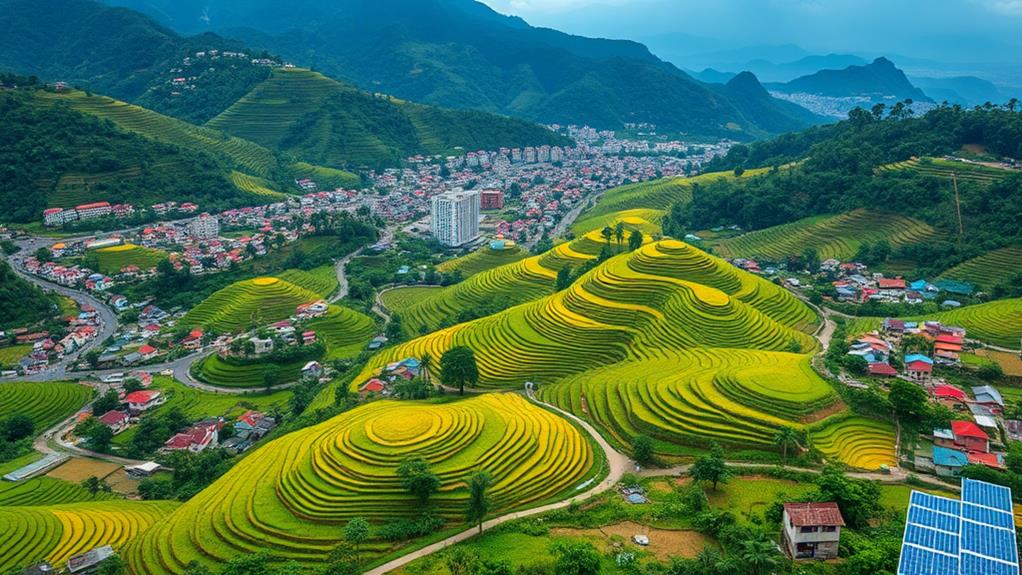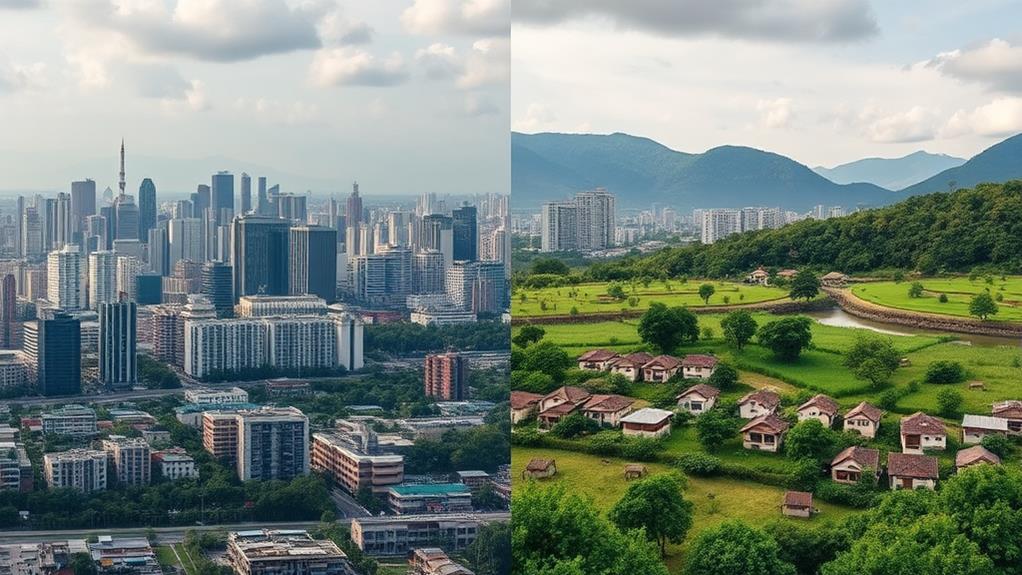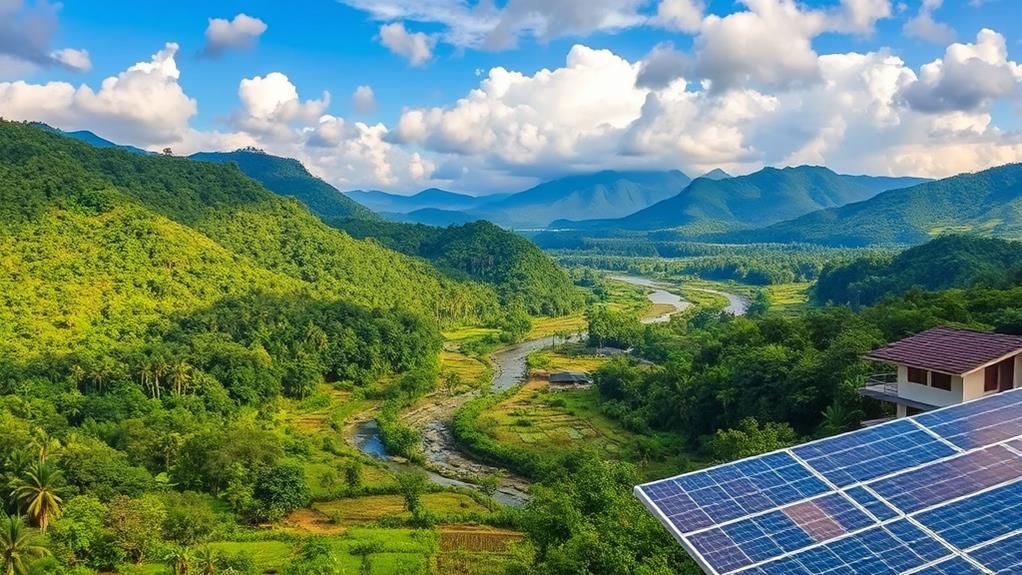Balancing economic growth with social equity and environmental protection in the Philippines requires strong policies and good governance. A large amount of wealth is held by a few people, which leads to widespread poverty, especially in rural areas.
Current economic plans focus on growth, but they often overlook the need to protect the environment, making social inequalities worse.
To improve this situation, policies must ensure fair distribution of resources. For example, programs can provide financial support to farmers in rural areas, helping them earn a better living.
Improving access to education is also essential. This can include scholarships for students in low-income families to help them complete their schooling.
Strong environmental rules are necessary to protect natural resources. For instance, laws can limit pollution from factories to keep air and water clean.
Encouraging community participation and making government actions transparent can help everyone feel included in decision-making.
In summary, integrating fair resource distribution, education access, and environmental protection can lead to sustainable development in the Philippines.
Understanding Sustainable Development

Sustainable development in the Philippines aims to balance economic growth, social equity, and environmental protection. These three areas depend on each other, so if one is ignored, the others can suffer.
For example, the Human Development Index (HDI) for the Philippines was 0.672 in 1995, ranking 98th out of 174 countries. This score shows that there's still a need to improve in areas like health, education, and living conditions.
Poverty reduction is a major issue, especially in rural areas where the poverty rate was 44.4% in 1997. This number highlights the social issues that must be tackled to support sustainable growth.
In the Philippines, economic policies have often focused on growth, but this has led to unequal resource distribution. The richest 20% of the population earns over half of the total income, while the poorest 20% receives only 5%.
To reach sustainable development, the country needs strong institutions and effective governance. These systems help integrate social, economic, and environmental factors into decision-making.
This ensures that growth benefits all Filipinos and is sustainable for future generations.
Economic Policies in the Philippines
Economic policies in the Philippines have changed a lot to tackle poverty, which was 32.1% in 1997. The government has created plans to help the economy grow and support fair opportunities for everyone.
One important plan is equitable adjustment programs. These programs help people gain access to resources like loans and land.
Another key focus is on education, with 25% of government spending dedicated to it. This investment aims to improve skills and knowledge in the population.
The Comprehensive Agrarian Reform Program is another major policy. It tries to give farmers more land, but it has faced challenges in its execution, which affects agricultural growth.
Additionally, the Comprehensive Tax Reform Program aims to reduce income inequality by redistributing wealth through fairer taxes.
However, corruption remains a big issue. It reduces the impact of government spending and keeps income gaps wide.
By prioritizing fair fiscal policies and sustainable development, the Philippines can create a better economy for everyone.
Challenges to Balanced Growth

Balancing economic growth in the Philippines is difficult due to serious social and structural problems.
High poverty rates, especially in rural areas, remain a major challenge. In 1997, poverty in these areas was at 44.4%. Income inequality is also a significant issue, with the richest 20% of people earning over half of the country's total income, while the poorest 20% only receives about 5%. This inequality makes it hard to achieve fair growth.
Economic policies often focus on growth without considering environmental protection. This leads to environmental harm. Government agencies sometimes ignore sustainable practices, which worsens the problem.
Corruption is another major barrier. It helps wealthier groups while making it harder for those in poverty to improve their situation. This corruption keeps income inequality alive and limits opportunities for lower-income people.
In agriculture, strict regulations hinder progress. Rules on price controls and land ownership reform make it hard for farmers to earn a decent living and attract investment, worsening economic gaps.
To overcome these challenges, policymakers need to create strong policies that connect economic growth with social fairness and environmental care. This approach can lead to a more just and sustainable future for all Filipinos.
Promoting Social Equity
To achieve social equity in the Philippines, it's important to have specific policies that help marginalized groups.
Income inequality is a major issue; the richest 20% earn more than half of the country's income, while the poorest earn only about 5%. Therefore, fiscal policies should focus on improving human development and reducing poverty.
Here are some key strategies:
- Resource Allocation: Funds should be directed towards education, healthcare, and job training for marginalized groups. For example, scholarships can help low-income students access higher education.
- Transparency and Accountability: Governance needs to be strengthened to reduce corruption. This ensures that resources, like government aid, reach the people who truly need them.
- Community Engagement: Local communities should be involved in making policies. For instance, holding town hall meetings allows people to share their specific challenges and needs directly with decision-makers.
- Sustainable Practices: Environmental sustainability should be included in social equity efforts. This means creating programs that not only help people today but also protect the environment for future generations.
Environmental Protection Strategies

Implementing environmental protection strategies is essential for sustainable development in the Philippines. Strong environmental laws, like the Clean Air Act and Clean Water Act, help reduce pollution and protect resources. These laws address immediate problems and support the goals of the Comprehensive Agrarian Reform Program, which promotes sustainable farming and fairness in land distribution.
The Philippines is also focusing on renewable energy to lower reliance on fossil fuels. The Renewable Energy Law supports projects like solar, wind, and hydroelectric power. These efforts are important in fighting the effects of climate change, such as rising sea levels and more natural disasters.
Another key strategy is moving towards a circular economy. This means reducing waste and managing resources wisely. Policies that encourage recycling and sustainable production can cut down waste, inspire new ideas, and create jobs.
Case Studies and Recommendations
In the Philippines, successful case studies show that combining economic policies with social equity and environmental protection leads to sustainable growth. This approach to development has been particularly effective in rural areas, where smallholder farmers and indigenous communities have benefited from greater access to markets and resources. In addition, the impact of remittances from Filipino workers overseas has played a crucial role in supporting local economies and improving living standards. By addressing the needs of the most vulnerable and protecting natural resources, the Philippines has been able to achieve long-term prosperity while preserving its unique cultural and ecological heritage.
For example, community-owned renewable energy projects allow local people to manage energy sources, which helps reduce the use of fossil fuels. Despite this progress, there are still challenges, particularly with the Comprehensive Agrarian Reform Program. This program needs better land ownership reforms to help reduce poverty and ensure fair access to resources.
To improve social equity and environmental sustainability, here are some key recommendations:
- Strengthen governance reforms to reduce corruption. This will help ensure fair distribution of resources and effective spending on social programs.
- Expand the Comprehensive Tax Reform Program to better share wealth. This can help address income gaps and improve social welfare.
- Invest in community-owned projects that focus on renewable energy. These projects empower local communities and promote care for the environment.
- Align economic policies with the Human Development Index. This will improve access to education and healthcare, which are crucial for better social equity.
Questions and Answers
How Do You Balance Between Economic Growth and Protection of the Environment?
To balance economic growth and environmental protection, we need to use sustainable practices. For example, businesses can reduce waste by recycling materials. We should also embrace green technology. An example of this is using energy-efficient appliances that use less power.
Prioritizing renewable energy is essential. For instance, solar panels can generate electricity without harming the environment. Community involvement is also important. People can participate in local clean-up days to help protect nature.
We need strong policy frameworks that set rules for businesses to follow. This can include limits on pollution. Corporate responsibility means companies should take care of the environment. For example, a company might choose to plant trees for every product sold.
How Can Nations Achieve a Balance Between Economic Growth and Environmental Sustainability?
To achieve a balance between economic growth and environmental sustainability, countries should adopt eco-friendly policies. These policies can include investing in green technology, such as solar panels and electric vehicles, which help reduce pollution.
Community engagement is also important. This means involving local people in decision-making about environmental issues, such as organizing clean-up events or community gardens.
Another key point is environmental education. Schools can teach students about conservation and recycling, helping them understand the importance of protecting nature.
Finally, corporate responsibility is crucial. Businesses should manage their resources wisely and control pollution by using cleaner production methods, such as reducing waste and emissions.
What Is a Balance Between Social Responsibility Environmental Protection and Economic Progress Called?
The term that describes a balance between social equity, sustainable development, and economic justice is sustainable development. This concept encourages businesses and communities to act responsibly towards the environment while also promoting economic growth. For example, companies can invest in green innovation by creating eco-friendly products that reduce waste. Additionally, ethical consumption involves choosing products that are made sustainably, which supports local communities and economies. This approach helps ensure that all people benefit from economic progress while protecting the environment. Overall, sustainable development is essential for creating a healthier planet and a fairer society.
How Can We Strike a Balance Between Economic Development and Environmental Concern?
To strike a balance between economic development and environmental concern, focus on sustainable practices. This means using resources in a way that does not harm the environment. For example, using solar panels or wind turbines can help produce energy without polluting the air.
Another important step is to invest in renewable energy. This includes supporting projects that create energy from natural resources like sunlight, wind, or water. For instance, building solar farms can provide clean energy while creating jobs.
Engaging communities in ecological conservation is also crucial. Local groups can help protect parks and wildlife. An example is community clean-up events that not only help the environment but also bring people together.
Improving urban planning for climate resilience is necessary too. This means designing cities to withstand climate change impacts, like flooding. An example is creating more green spaces in cities that can absorb rainwater and reduce heat.
Finally, promoting environmental education is essential. Teaching people about responsible resource management can lead to better choices. For example, schools can have programs that show students how to recycle and reduce waste.